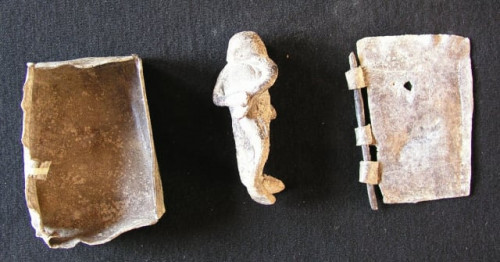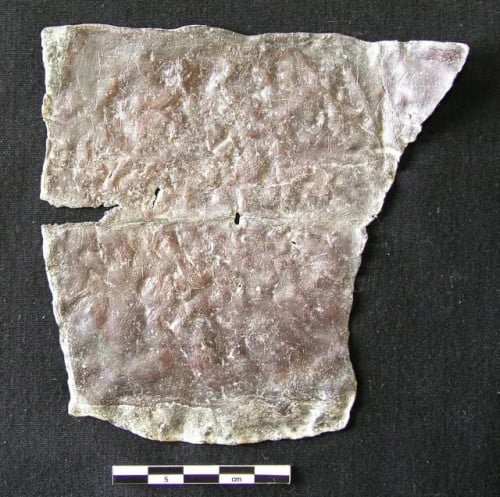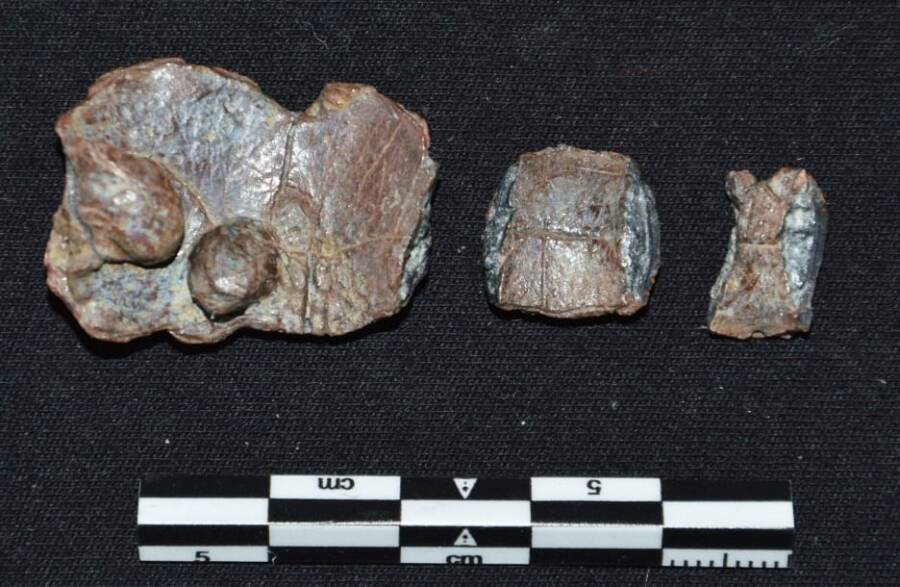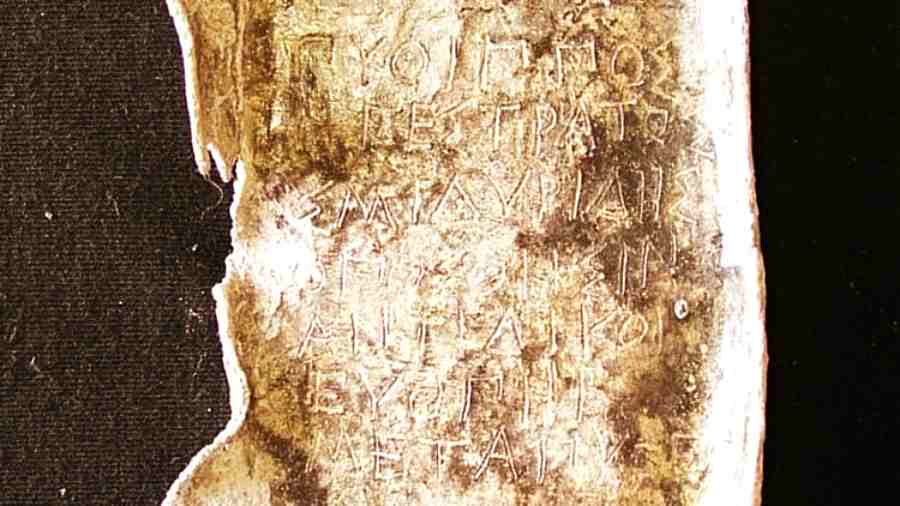![]() Part of a curse tablet against Pytheas, ordered by his opponent in an Athenian court. Photo credit: Dr. Jutta Stroszeck – German Archaeological Institute.
Part of a curse tablet against Pytheas, ordered by his opponent in an Athenian court. Photo credit: Dr. Jutta Stroszeck – German Archaeological Institute.
Sat 24 February 2024:
At the base of an old well near Athens, thirty lead curse tablets were found. The well was found northwest of the ancient center, close to the Dipylon gate in the city wall, in the Kerameikos, the primary cemetery of ancient Athens, which was constructed in the potters’ area (keramos means potter’s clay).
The lead curse tablets date to its earlier years in the 4th century B.C. and after. Burying curses with the dead was common practice in the classical period.
The curse tablets were accidentally found in 2020 while archaeologists were investigating the supply of water to a 1st century BC bathhouse which was close to the well.

The rocky, muddy opening to the ancient well in Kerameikos, Athens where the curse tablets were found. Photo credit: Dr. Jutta Stroszeck – German Archaeological Institute
Before the Eridanos river was diverted during the classical era and the city walls were built, the enormous site was spanned by the river. Due to a shortage of fresh water in Athens, both public and private wells were built in the Kerameikos, where its former meandering route proved ideal.
Over 40 Kerameikos wells have been discovered thus far as a result of a study initiative started in 2011 by the German Archaeological Institute, which has been excavating the site since 1913.

Lead objects found at the bottom of the Kerameikos well dating back to the 5th century. BC. Photo credit: Dr. Jutta Stroszeck – German Archaeological Institute
This well was in use for almost a thousand years, believe it or not, with occasional periods of abandonment in the wake of wars like Sulla’s siege and burning of Athens in 86 B.C. or of plagues. The Slavic invasions of the late 6th century A.D. put a permanent end to its use as a well, which was probably for the best given how much lead had been soaking in there for 800 years or so.

Love and Hate: This curse tablet was created against a newlywed woman named Glykera. The curse, which focuses on her vagina, was made by someone who envied the woman’s marriage. Photo credit: Dr. Jutta Stroszeck – German Archaeological Institute
Curses, enshrined on tablets made from lead, wax and stone, were not uncommon practices in Ancient Greece and Rome, when lines between magic and religion were blurry.
According to Christopher A. Faraone, Professor of Classics at the University of Chicago in Illinois, the majority of curses we know of were binding spells designed to restrict rivals. Frequently they were used in lawsuits, where they may be used, for example, to prevent someone from testifying against them.
In other instances, they were placed in graves to send to the gods of the underworld with the dead in the hope that the gods would carry out requests.

A Grecian curse tablet in the shape of a liver found in Kerameikos where at least 30 such hexes have been discovered. Jutta Stroszeck/German Archaeological Institute
It was thought that wells and rivers, which are both guarded by nymphs, offered direct access to the underworld, according to the director of excavation Dr. Jutta Dr. Stroszeck. It was thought that the curse would become active if thrown into a well.
Reflectance transformation imaging, a digital method that makes it possible to read even the smallest writings on lead, has been used to document the 30 new tablets. In the end, the archaeologists want to know the nymph’s identity, the type of curses, and if any well-known Athenians who were residing in the city in the late fourth century B.C.E. were the targets of the hexes.
Aside from the curse tablets, the team found pottery for drinking, mixing and drawing water, as well as various wooden products, cooking pots, clay lamps and bronze coins.
According to the Greek Ministry of Culture and Sports, Kerameikos is named after a community of potters (or “kerameis”) that once lived there. Because of the site’s positioning near a river, it was subject to constant flooding, which made it a difficult area to inhabit—and so it became to be used as a burial instead.
Eventually, says the ministry, it became the most important cemetery serving ancient Athens. The oldest tombs in Kerameikos are from the early Bronze Age, 4,000 to 5,000 years ago. More recent tombs can be traced to the Hellenistic and Early Christian Period (circa 338 BCE-600 CE).
SOURCE: INDEPENDENT PRESS AND NEWS AGENCIES
______________________________________________________________
FOLLOW INDEPENDENT PRESS:
WhatsApp CHANNEL
https://whatsapp.com/channel/0029VaAtNxX8fewmiFmN7N22
![]()
TWITTER (CLICK HERE)
https://twitter.com/IpIndependent
FACEBOOK (CLICK HERE)
https://web.facebook.com/ipindependent
YOUTUBE (CLICK HERE)
https://www.youtube.com/@ipindependent
![]()
Think your friends would be interested? Share this story!





